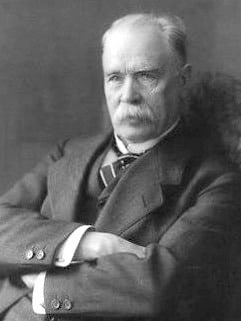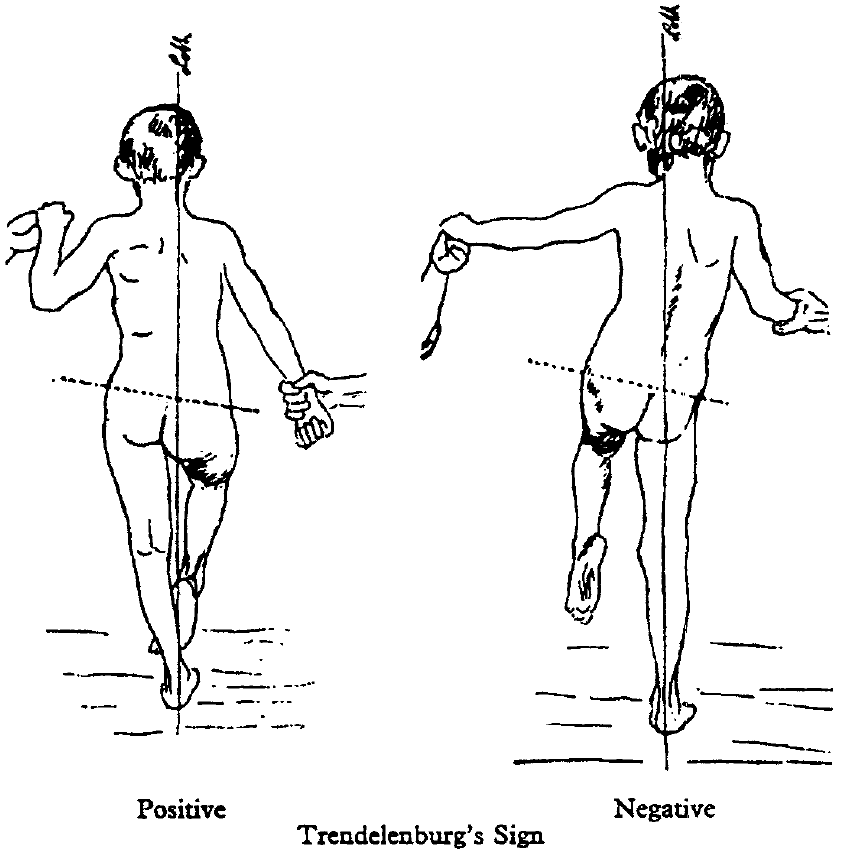Friedrich Trendelenburg
Friedrich Trendelenburg (1844-1924) was a German surgeon and innovator
Trendelenburg made a variety of valuable contributions in the field of medicine. Today his name is still associated with the Trendelenburg position and the Trendelenburg test, sign and gait in assessing weakness of hip abductors. He also attempted the first ever pulmonary embolectomy.
Biography
- Born May 24, 1844 in Berlin, Germany the son of the famous German philosopher Friedrich Adolf Trendelenburg (1802-1872)
- 1861 – his father thought him not yet ready to enter university, and sent him to Edinburgh to teach German to the family of an editor. In Scotland, at the University of Glasgow, he took anatomy classes with Allen Thomson (1809-1884)
- 1863-1866 MD, University of Berlin; dissertation ‘De veterum Indorum chirurgica‘ on surgery in ancient India
- 1866 – worked at a military hospital in Gorlitz and Kiel during the brief Austro-Prussian war
- 1868-1874 – worked as first assistant to Bernhard von Langenbeck (1810-1887) and developed the tampon-cannula
- 1869-1871 – awarded the Eisernes Kreuz (Iron Cross) for his service as a military doctor
- 1872 – founded the Deutsche Gesellschaft für Chirurgie (German Surgical Society)
- 1874 – director of the Surgical Department at the Friedrichschain Hospital in Berlin
- 1875 – professor of surgery in Rostock
- 1882 – professor of surgery, University of Bonn
- 1890 – published two clinical tests to detect venous valve insufficiency and described an operation for varicose veins, ligature of the great saphenous vein
- 1895 – professor of surgery at Leipzig University and surgeon-in-chief at the University clinic; published his study about congenital hip luxation and a new diagnostic sign for the disease
- 1907 – first ever attempt at surgical removal of a pulmonary embolism (unsuccessfully)
- 1911 – retired
- 1924 – lived to see his student Martin Kirschner (1879-1942) perform the first successful surgical embolectomy
- Died December 15, 1924 from cancer of the mandible
Medical Eponyms
Trendelenburg cannula (1871)
Trendelenburg introduced the tampon cannula, a tube with an inflatable rubber collar designed to prevent the aspiration of blood during surgical procedures of the oral cavity, pharynx and larynx.
In his 1871 publication on the apparatus he cites his own experience with the problems of aspiration in connection with major surgery of the larynx. He described a procedure based on tracheostomy and his Tampon-Canule; lists six different operations where the technique could be indicated; and closes by reporting his first case (December 1869)
He illustrates the cannula, the tracheotomy site, cuff inflation and the application of teh Trendelenburg cone to provide inhalational anaesthesia with chloroform dripped onto a flannel draped across a wire frame.
Trendelenburg test (1891) [varicose veins]
Test for varicose veins: used in patients with varicosities of the lower limb to assess valve competency. More specifically it can aid in locating incompetencies in the three venous systems of the leg (superficial, deep or perforating)
Firstly the patient lies supine with leg at 45 degrees to empty the veins. The great saphenous vein (GSV) is occluded by either the examiner’s hand or a tourniquet and the patient is then asked to stand. The examiner observes for filling of the varicosities. Secondly, the pressure is released from the GSV and filling observed.
Findings are examiner-dependent and hence have since been superseded by more objective clinical tests for locating sites of venous reflux. Interpretation:
- Negative test: no clinical evidence of reflux with varicosities gradually filling from arterial inflow
- Positive test:
- Filling of the varicosities PRIOR to release of pressure on the GSV indicates incompetence in both the deep and perforating venous systems and competence of GSV valves.
- Filling of the varicosities AFTER release of pressure on the GSV indicates incompetence of the GSV valves and competence of the deep and perforating venous systems.
Trendelenburg test (1895) [hip abductors]
Sign of congenital dislocation of the hip joint. Clinical sign in static insufficiency of the gluteal muscles, for instance as a result of luxation of the hip joint.
Conducted with patient standing erect on one leg unassisted, and observed from behind. Used to assess weakness of the abductor muscles of the hip (gluteus medius and minimus). Interpretation:
- Positive test: the hemipelvis on the contralateral side to the stance leg drops (Sound Side Sags). This indicates weakness of the abductor muscles on the stance leg in supporting the pelvis against gravity.
- Negative/normal test: the hemipelvis on the contralateral side to the stance leg will remain equal or rise
Major Publications
- Trendelenburg F. Beiträge zu den Operationen an den Luftwegen [Contributions to operations on the airways] Archiv für klinische Chirurgie, Berlin, 1871; 12: 112-133. [Trendelenburg cannula]
- Trendelenburg F. Beiträge zu den Operationen an den Luftwegen [Contributions to operations on the airways] Archiv für klinische Chirurgie, Berlin, 1872; 13: 112-133.
- Trendelenburg F. Über Blasenscheidefisteloperationen und über Beckenhochlagerung bei Operationen in der Bauchhöhle. Sammlung klinischer Vorträge, Nr. 355, Chirurgie, 1890; 109: 3372-3392. [Reprinted with translation. Operations for vesico-vaginal fistula and the elevated pelvic position for operations in the abdominal cavity. Medical Classics, 1940, 4: 936-988.][Trendelenburg position]
- Trendelenburg F. Über die Unterbindung der Vena saphena magna bei Unterschenkelvaricen. Beiträge zur klinischen Chirurgie, 1891; 7: 195-210. [Reprinted, with translation, Ligation of the great saphenous vein in varicose veins of the leg. Medical Classics, 1940; 4: 989-1023.] [Trendelenburg test (varicose veins)]
- Trendelenburg F. Operationsstuhl zur Beckenhochlagerung. Beiträge zur klinischen Chirurgie. 1892; 8: 225 [Trendelenburg position]
- Trendelenburg: Über den Gang bei angeborener Hüftgelenksluxation. Deutsche medicinische Wochenschrift, Berlin, 1895; 21: 21-24. [Trendelenburg test (symptom)]
References
Biography
- Schwokowski C. Friedrich Trendelenburg – Pionier und Klassiker der Chirurgie. Leipzig-Lese
- Fresquet JL. Friedrich Trendelenburg (1844-1924). Historia de la Medicina
- Bibliography. Trendelenburg, Friedrich 1844-1924. WorldCat Identities
- Schwokowski C. Friedrich Trendelenburg 1844–1924. Zeitloser Glanz seiner Verdienste um die Chirurgie. Springer 1994
- Bernstein AM, Koo HP, Bloom DA. Beyond the Trendelenburg position: Friedrich Trendelenburg’s life and surgical contributions. Surgery. 1999 Jul;126(1):78-82.
Eponymous terms
- Peltier LF. Trendelenburg’s Test: 1895, Clinical Orthopaedics and Related Research. 1998; 355: 3-7
- Dick WF. The resuscitation greats. Friedrich Trendelenburg (1844-1924). Resuscitation. 2000 Aug 1;45(3):157-9.
- Thiery M. Friedrich Trendelenburg (1844-1924) and the trendelenburg position. Gynecological Surgery. 2009 Sep 1;6(3):295-297.
- Cassidy L, Bandela S, Wooten C, Jennifer C, Tubbs RS, Loukas M. Friedrich Trendelenburg: historical background and significant medical contributions. Clin Anat. 2014 Sep;27(6):815-20
- Guthrie K. Trendelenburg Position for the Hypotensive Patient. LITFL 2019
Emergency Medicine Trainee based in Perth, Western Australia. Keen interest in ultrasound, rural health and water-based activities.



